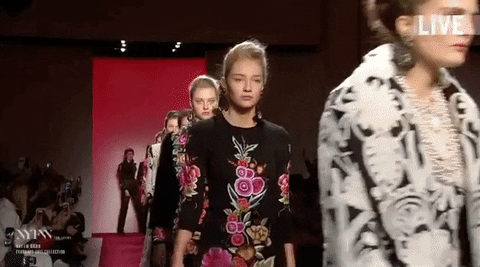Fashion has always mirrored society’s broader transformations. What we wear isn’t just about fabric or cut—it’s about mood, mindset, and moment. Few pieces demonstrate this more vividly than denim. Over the past two decades, skinny jeans reigned supreme, tightly stitched into the identity of millennials and the late 2000s aesthetic. But in a remarkable twist that only fashion can master, wide-leg jeans—once considered relics of the ’70s, ’90s, and early 2000s—are not only back, but boldly leading denim’s renaissance. The dethroning of skinnies isn’t just about style preferences. It’s a reflection of a deeper cultural pivot—toward freedom, comfort, and fluid expression.
The Rise and Rule of Skinny Jeans
Skinny jeans weren’t always cool. When they first appeared on shelves in the early 2000s, they were met with skepticism, often seen as overly trendy or limiting. But their sleek silhouette, body-hugging fit, and versatility quickly turned them into a wardrobe essential. From high fashion runways to high school hallways, skinny jeans carved a long-lasting niche. They flattered a range of body types, could be paired with almost anything, and became symbolic of a certain effortful chic.
They were also deeply tied to the digital era’s first influencers. Tumblr aesthetics, early Instagram selfies, and celebrity street style cemented skinnies as a default. They conveyed control, precision, and aspiration—values aligned with the hustle-heavy mindset of a generation trying to define success in a rapidly shifting world.
But as with all things fashion, dominance eventually gives way to fatigue.
Cracks in the Skinny Armor
As 2020 approached, skinny jeans started to feel—quite literally—constricting. Not just on the legs, but on the psyche. The fashion world was already shifting toward looser silhouettes: oversized blazers, slouchy trousers, dad sneakers. Comfort was no longer just a weekend indulgence—it was becoming a daily necessity.
Then came the global pandemic. People traded office attire for sweatpants and leggings. Working from home normalized comfort-wear. And with it, skinny jeans began to feel outdated. Suddenly, no one wanted to squeeze into something tight just to run errands or take Zoom calls. The shift wasn’t just practical—it was psychological. After a period of unprecedented stress and introspection, people began rejecting anything that felt restrictive, both literally and figuratively.
Enter Wide-Leg Jeans
Wide-leg jeans emerged as a refreshing antidote. Spacious, dramatic, and unapologetically nostalgic, they brought a breath of fresh air to the denim landscape. More than just pants, they became a symbol of relaxed confidence and sartorial rebellion.
What’s interesting about wide-leg jeans is how cyclical their popularity is. From the disco-ready bell bottoms of the ’70s to the grunge baggies of the ’90s, they’ve always signaled a break from the norm. Today’s wide-leg resurgence combines elements from both eras, modernized with cleaner tailoring and sustainable fabrics.
They also offer something that skinny jeans often lacked: movement. Whether you’re walking, dancing, or lounging, wide-leg denim flows with the body instead of working against it. For a generation increasingly interested in how clothes feel rather than how they look, that makes all the difference.
Aesthetics Reimagined
It would be a mistake to say that wide-leg jeans are just “in style.” Their popularity also signals a deeper shift in fashion’s visual language. Social media platforms like TikTok and Pinterest have popularized aesthetics like “clean girl,” “soft grunge,” “Y2K,” and “minimalist Scandinavian”—all of which make ample use of voluminous denim.
This isn’t just a fashion change—it’s a style philosophy. Wide-leg jeans can be dressed up or down, styled with a cropped blazer or a thrifted band tee. They suggest a more curated, expressive, and fluid approach to dressing. Where skinny jeans often felt formulaic, wide-leg styles invite experimentation.
Moreover, Gen Z’s dominance in trend-making has put authenticity and individuality at the forefront. The stiff, sculpted silhouette of skinnies doesn’t lend itself as well to today’s fluid gender norms or nonconforming beauty standards. Wide-leg jeans, by contrast, offer a silhouette that’s forgiving, versatile, and deeply inclusive.
Cultural Comfort: What Jeans Say About Us
The transition from skinny to wide-leg jeans is also about comfort in identity. For years, fashion—especially women’s fashion—has been dictated by aspirational beauty standards. Clothes were often chosen not for what they offered, but for what they concealed or accentuated. Skinny jeans were frequently about showcasing legs, hiding flaws, achieving a streamlined silhouette.
Wide-leg jeans flip that narrative. They don’t just accept the body—they celebrate its presence. There’s power in fabric that doesn’t conform, in denim that doesn’t cling. It sends a message: I’m here, I’m comfortable, and I don’t need to squeeze myself into a mold to belong.
This mindset aligns closely with the mental health conversation happening globally. More people are rejecting toxic productivity, hustle culture, and the glorification of discomfort. The clothes we wear are catching up to these internal shifts.
The Influence of Nostalgia and Sustainability
Fashion loves a good comeback, and wide-leg jeans ride the nostalgia wave with finesse. Gen Z and younger millennials are deeply influenced by the past—not just for aesthetic reasons, but because vintage clothing aligns with sustainability goals. Thrifting and upcycling have become mainstream, and looser denim from previous decades is easier to find, wear, and adapt.
Wide-leg jeans also have a lower failure rate in resale and reuse. Their more forgiving shape and size make them less subject to the “perfect fit or bust” rule that skinny jeans operate under. In short, they’re better for closets, bodies, and the planet.
Skinnies Aren’t Dead—They’re Just Not the Default
Despite the current dominance of wide-leg jeans, skinny jeans haven’t disappeared entirely. They’ve simply been dethroned from their position as the denim default. Much like flared pants or boyfriend cuts, they’ll continue to cycle through fashion’s wheel of reincarnation.
But the difference today is that wide-leg jeans have expanded the denim vocabulary. They’ve made room for variety, choice, and play. No longer must style feel like a tightrope walk between beauty standards and comfort. With wide-leg jeans, fashion can be fluid, joyful, and freeing.














